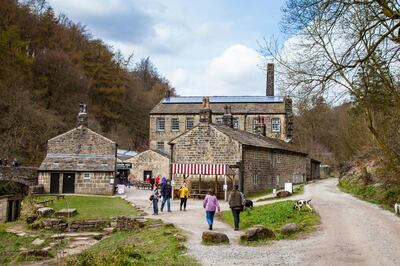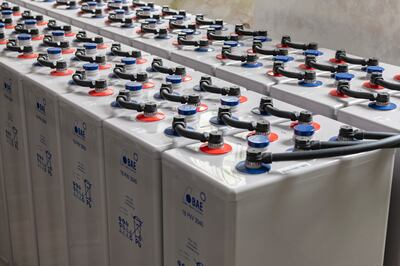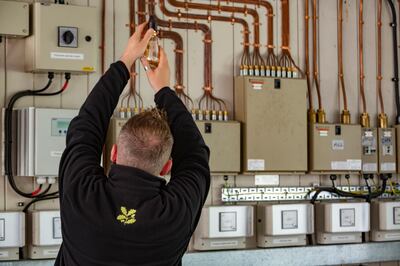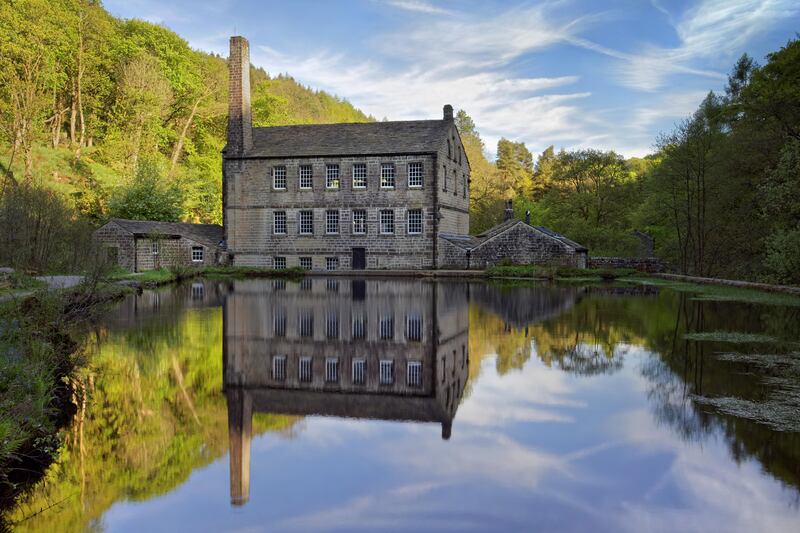Making more than 500 of the UK’s historic buildings sustainable is a seemingly impossible task.
But with Glasgow hosting the UN’s Cop26 climate change summit, the National Trust, the guardian of many of Britain’s most prestigious properties, is pushing ahead with its ambitious plans to become 50 per cent renewable by next year.
The picturesque 17th century Gibson Mill, nestled in ancient woodland at Hardcastle Crags in West Yorkshire, has become the Trust’s first sustainable property.
The majestic mill was once at the forefront of the industrial revolution as one of the first cotton mills in England to be powered by a water wheel.
Fast-forward 200 years, it is the first National Trust property to be run entirely off the grid.
Batteries designed for use in electric cars capture energy generated by water turbines and other renewable sources, boosting the mill’s power-storage capacity by 30 per cent.
Lucie Green, professor of physics at University College London, says Gibson Mill is the “holy grail” of sustainability.
“The heritage and conservation work is about the past, but the work they are doing very much behind the scenes is very much about preserving the future for us all,” she said.
Using water turbines and roof-mounted solar panels, the National Trust is able to generate almost all the power for the site. A biomass boiler, fuelled with sustainably sourced woodchips, provides its hot water.

The mill’s facilities co-ordinator, Murray Chalmers, said its work was an important way of educating staff and visitors about climate change.
“Around 70 per cent of our power is generated through hydroelectric turbines,” he said.
“I think it’s important that we run properties like this and show we can, on a sustainable basis, because climate change is happening.”
All the property’s power is stored in a battery system provided by BMW i, the electric sub-brand of BMW. The company has also installed electric vehicle charging points at the mill and several other heritage properties in England and Wales.
“Our partnership with BMW i started at the end of 2017,” the National Trust said.

“During that time, they supported a number of projects with us. Their funding enabled vital improvements to the energy system at Hardcastle Crags and they sponsored a five-part podcast series charting the history and progress of green energy at the places we care for.
“In addition, they ran a number of sustainability workshops and supported our network of electric vehicle charging points.”
The Trust’s other properties have also been making strides towards becoming more sustainable.
The Victorian mansion of Cragside in Northumberland, the former home of the British Army’s chief armouries manufacturer, Lord William Armstrong, was one of England’s first smart homes.
Lord Armstrong had used his engineering prowess to create Britain’s first hydro-powered home, in 1878, and filled his property with gadgets for efficient modern living.
Under the National Trust’s stewardship, the original hydroelectric system has been upgraded to power the estate into the future.
At its woodland estates in Norfork, Sheringham Park and Felbrigg, the trust is harvesting hundreds of tonnes of timber every year to heat workshops, offices and visitor centres.
It has created an “electric garden” at Bodnant Garden, near Colwyn Bay, on the edge of Snowdonia, Wales, using solar panels to power the cafe and visitor centre.
One of its more unusual developments involved using technology from a converted Victorian hydro-sewage system to help protect The Coverdale Bible, the first English-language bible.
Lake powered energy at the Blickling Estate in Norfolk, the birthplace of Anne Boleyn, is being used to create the climatic conditions needed to preserve the book and more than 12,500 other titles in its library, including the first edition of Jane Austen’s Pride and Prejudice.

The lake-powered system also pumps rainwater around the irrigation systems that feed the plants and flowers in the gardens.
The initiative saves the Trust more than £30,000 ($40,500) a year on fuel costs and is reducing its carbon emissions by 69 tonnes a year.
The National Trust is sending a team to the Cop26 climate change summit in Glasgow to raise awareness of the impact of climate change on its wildlife, beaches, woodlands, archaeological sites and historic buildings – and the roles they can play in tackling it.
“The UK’s Climate Change Committee is clear that a transformation in the use of land is needed if we are to meet our net-zero target,” Hilary McGrady, director general of the National Trust, has said.
“Those attending the summit have the power to lead that transformation.”
The National Trust says rising temperatures are damaging some of its finest paintings and archaeological discoveries are in danger of being lost.
It estimates that almost three quarters of the most important land in its care is vulnerable to climate change and has described the scale of the threat as “breathtaking”.







